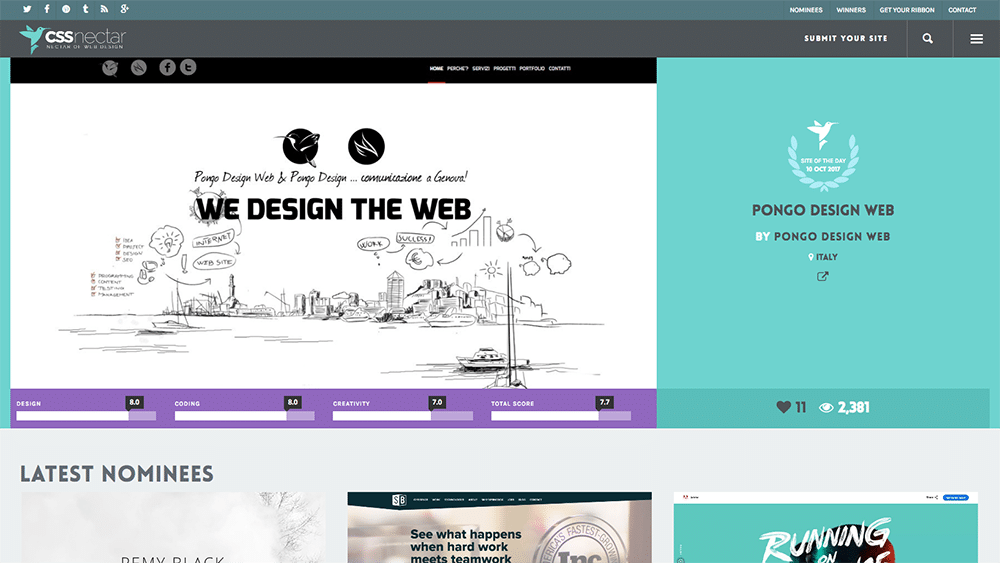A Detailed Review of the Finest Practices in Internet Layout for Developing Intuitive and Navigable Online Systems
The performance of an online system pivots considerably on its design, which have to not just draw in customers however likewise lead them flawlessly with their experience. Understanding these concepts is critical for designers and developers alike, as they directly influence customer fulfillment and retention.
Recognizing Customer Experience
Comprehending user experience (UX) is crucial in web style, as it straight affects how site visitors interact with an internet site. A well-designed UX ensures that individuals can navigate a website with ease, accessibility the info they look for, and full desired activities, such as authorizing or making an acquisition up for an e-newsletter.
Functionality focuses on the ease with which customers can achieve tasks on the web site. Access ensures that all users, including those with impairments, can communicate with the site successfully.
Visual appeals play an important role in UX, as visually appealing layouts can boost customer contentment and interaction. Color plans, typography, and imagery should be attentively picked to produce a cohesive brand name identification while also helping with readability and comprehension.
Inevitably, prioritizing customer experience in website design fosters better user satisfaction, urges repeat brows through, and can significantly improve conversion rates, making it an essential aspect of effective digital strategies. (web design)
Importance of Responsive Layout
Receptive layout is a critical element of modern-day web advancement, making sure that sites give an optimal viewing experience throughout a wide variety of tools, from desktops to smart devices. As user habits increasingly moves in the direction of mobile surfing, the need for internet sites to adapt flawlessly to various screen sizes has actually ended up being critical. This flexibility not just enhances use but likewise dramatically impacts customer interaction and retention.
A responsive layout uses fluid grids, flexible images, and media queries, enabling a natural experience that keeps functionality and aesthetic stability regardless of gadget. This approach eliminates the need for users to zoom in or scroll horizontally, bring about a more instinctive communication with the web content.
Additionally, search engines, notably Google, focus on mobile-friendly sites in their rankings, making receptive design vital for maintaining visibility and availability. By taking on receptive style principles, services can get to a wider audience and improve conversion rates, as individuals are extra likely to engage with a site that offers a smooth and consistent experience. Inevitably, responsive design is not just a visual option; it is a calculated necessity that mirrors a commitment to user-centered design in today's electronic landscape.
Simplifying Navigation Frameworks
A well-structured navigating system is important for enhancing the customer experience on any type of site. Simplifying navigating structures not only aids individuals in finding info quickly yet also cultivates interaction and decreases bounce prices. To accomplish this, internet designers should focus on clarity with using uncomplicated labels and groups that reflect the web content precisely.

Incorporating a search feature further boosts usability, permitting individuals to locate content directly. In addition, carrying out breadcrumb trails can give customers with context regarding their location within the website, promoting simplicity of navigation.
Mobile optimization is an additional essential element; navigation needs to be touch-friendly, with clearly specified links and buttons to suit smaller displays. By reducing the number of clicks required to access material and making sure that navigation corresponds throughout all pages, developers can produce a smooth user experience that urges expedition and lowers frustration.
Focusing On Access Specifications
About 15% of the worldwide population experiences some type of handicap, making it vital for internet designers to focus on availability standards in their jobs. Ease of access encompasses different elements, consisting of aesthetic, auditory, cognitive, and electric motor impairments. By adhering to established guidelines, such as the Web Material Access Standards (WCAG), designers can produce comprehensive electronic experiences that satisfy all customers.
One fundamental practice is to make sure that all content is perceivable. This consists of giving alternative text for photos and guaranteeing that video clips have inscriptions or transcripts. Moreover, keyboard navigability is important, as several users rely upon keyboard shortcuts instead of computer mouse interactions.
 Additionally, shade comparison need to be carefully considered to resource suit people with aesthetic disabilities, guaranteeing that text is legible against its history. When creating forms, tags and mistake messages should be clear and descriptive to aid customers in finishing jobs successfully.
Additionally, shade comparison need to be carefully considered to resource suit people with aesthetic disabilities, guaranteeing that text is legible against its history. When creating forms, tags and mistake messages should be clear and descriptive to aid customers in finishing jobs successfully.Last but not least, performing use screening with individuals that have impairments can offer vital insights - web design. By prioritizing ease of access, web designers not just follow legal criteria yet likewise expand their target market reach, promoting an extra inclusive on the internet setting. This commitment to accessibility is necessary for a user-friendly and really accessible internet experience
Using Aesthetic Power Structure
Quality in style is paramount, and using visual power structure plays a Full Report crucial function in accomplishing it. Visual power structure refers to the plan and discussion of components in a way that clearly suggests their relevance and guides customer attention. By tactically utilizing size, color, comparison, and spacing, developers can develop an all-natural circulation that directs individuals through the web content perfectly.
Utilizing larger fonts for headings and smaller sized ones for body message establishes a clear distinction in between sections. Additionally, using vibrant colors or different histories can accentuate critical info, such as call-to-action buttons. White room is just as crucial; it helps to prevent mess and enables individuals to focus on one of the most crucial components, improving readability and total individual experience.
An additional trick facet of aesthetic power structure is the use of imagery. Relevant images can improve understanding and retention of details while likewise separating text to make content more absorbable. Eventually, a well-executed visual hierarchy not only improves navigation yet likewise cultivates an my review here instinctive communication with the internet site, making it extra most likely for customers to accomplish their goals efficiently.
Verdict

In addition, the reliable usage of visual hierarchy enhances individual engagement and readability. By prioritizing these components, web designers can substantially enhance user experience, making certain that on-line systems satisfy the diverse needs of all customers while facilitating reliable communication and complete satisfaction.
The effectiveness of an online platform hinges substantially on its design, which must not only bring in individuals but additionally direct them perfectly with their experience. By adopting receptive design concepts, services can reach a wider audience and improve conversion prices, as individuals are more most likely to engage with a website that provides a constant and smooth experience. By sticking to developed guidelines, such as the Internet Content Accessibility Standards (WCAG), developers can create comprehensive digital experiences that provide to all individuals.
White space is similarly crucial; it assists to prevent clutter and permits customers to focus on the most vital aspects, enhancing readability and total individual experience.
By focusing on these elements, internet developers can dramatically improve individual experience, guaranteeing that on the internet platforms meet the diverse needs of all individuals while promoting reliable interaction and complete satisfaction.
Comments on “Exactly how to Maximize Your Site's Efficiency with Advanced Web Design Approaches”